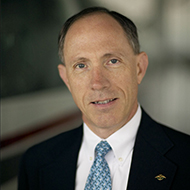Sometimes a referee is needed
"It was a busy, nontowered airport with several aircraft in the pattern and several waiting for takeoff on Runway 24...After waiting for several aircraft in the pattern to land, a break occurred after a taildragger landed. I checked to see that no one was on base and announced that I was going into position and hold on Runway 24, until the taildragger cleared the runway. He took some time clearing and I then announced that I was rolling on [Runway] 24 with a westbound departure. As I was accelerating down the runway, a shadow appeared. A Cessna 172 passed 30 to 40 feet overhead and landed right in front of me. I closed the throttle, braked, and aborted the takeoff. The Cessna exited and parked...I asked [the pilot] if he saw me on the takeoff roll. After a few seconds of radio silence, he called back, 'Yeah, I saw you.' "
ASRS analyst comment: "As the pilot of a homebuilt aircraft reported...use of the correct procedures for departing a nontowered airport can be 'overshadowed' by a less conscientious arrival. Judging from the rather terse communication after landing, it appears that the Cessna pilot had an attitude problem."
Our discussion: Traffic pattern incidents and activities seem to be on the minds of many pilots. It's where every routine flight begins and ends, so there is potential for conflict and differing interpretations of the rules. I'll take a different perspective from the ASRS analyst and rule "offsetting penalties." See where you come out.
The Aeronautical Information Manual, which is the guide for airport operations, makes no comment about departing aircraft being able to "reserve" the runway after another aircraft has landed to ensure a quick departure before the next arrival. FAR 91.113(g), the right-of-way rule on landing, states in part, "Aircraft while on final approach to land or while landing, have the right of way over other aircraft in flight or operating on the surface, except that they shall not take advantage of this rule to force an aircraft off the runway surface which has already landed and is attempting to make way for the aircraft on final approach."
That is clearly not what happened here. Position-and-hold does not apply at nontowered airports. There is no one to "check your six," and the operation is contrary to the rule above. It may not be courteous for aircraft in the pattern to run tight circuits with multiple touch and goes, but inserting yourself on the runway is incorrect (see "Instructor Report: Departing When Clear," September 2001 AOPA Flight Training). The offense is guilty of holding.
The landing Cessna was certainly guilty of violating common sense and possibly FAR 91.13, careless and reckless operation. A violation of 91.111, operating near other aircraft, is also a possibility. If the runway is occupied, even improperly, go around and rejoin the downwind leg. The defense is guilty of encroachment.
I see two ways this could have been resolved without penalty-you may have other thoughts. The departing homebuilt pilot might have asked on the radio for a downwind aircraft to extend to allow some departures. Or, the Cessna pilot could have volunteered it and everybody could have had a turn at the runway with minimal delay. I've already gone on record to recommend that during prime times (arbitrarily, five or more aircraft in the pattern) touch and goes should not be done at nontowered airports for this very reason (see "Foundation Perspective: Airport Hogs," March 2003 AOPA Flight Training).
As we've said before, a little courtesy and a modicum of judgment enhance safety and make the whole flight experience more pleasant. Let's leave the penalties to the professional athletes and show the professional side of flight instruction and general aviation.
Bruce Landsberg is executive director of the AOPA Air Safety Foundation. Links to additional information about this subject may be found on AOPA Online.



